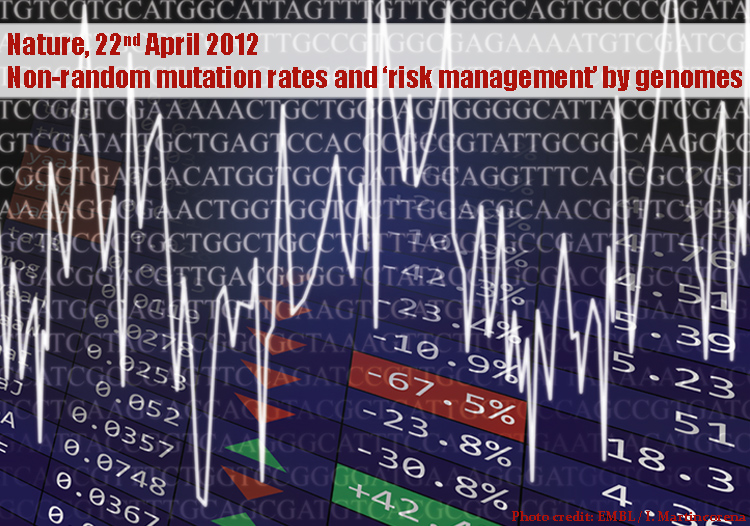A matter of priorities

Different genes mutate at different rates, in the bacterium E. coli. Photo credit: EMBL/ I. Martincorena. Graphic: Aathira Perinchery.
Just as banks store away only the most valuable possessions in the most secure safes, cells could also be prioritising which genes to guard most closely. A study published yesterday in Nature shows that bacteria have evolved mechanisms that protect important genes from random mutation, effectively reducing the risk of self-destruction. The study answers a question that has been debated for half a century and could provide insights into how mutations that cause diseases including cancers, arise.
Mutations, spontaneous genetic changes in our genomes, help to make each of us unique. Scientists have long thought that the chances of a mutation occurring were independent of its value to an organism: that good and bad mutations had equal chances of occurring. Once the mutation occurs, it undergoes natural selection (a process by which some mutations are selected over others), spreading through the population or being eliminated. This selection depends on how beneficial or detrimental the genetic change proved to be. But if the mutation affects an important gene - for example, rendering a tumour-suppressing gene useless - it can have fatal consequences. Nevertheless, protecting all genes from mutation would use up too much of the cell's resources, just like holding all deposits in maximum-security safes would be unnecessarily expensive.
Iñigo Martincorena, Aswin S. N. Seshasayee and Nicholas Luscombe have now found that cells evolve a 'risk management' strategy to address this issue. At the European Molecular Biology Laboratory's European Bioinformatics Institute (EMBL-EBI), they looked at 120,000 tiny genetic mutations called single nucleotide polymorphisms (SNPs) across 2,659 genes in 34 strains of the bacterium Escherichia coli. They quantified how random the mutation rate was in different areas of the bacterial genomes. They used population genetics techniques to separate mutation rate from natural selection. Results show that key genes mutate at a much lower rate than others, which decreases the risk of such genes suffering a detrimental mutation. "For many years in evolution there has been an assumption that mutations occur randomly, and that selection 'cleans them up'," says Martincorena. "But what we see here suggests that genomes have developed mechanisms to avoid mutations in regions that are more valuable than others."
Population geneticists have been using the accepted concept of random mutation rates as criteria for research tools. Will this study change that? "While the available evidence does show heterogeneity in mutation rates across the genome, these are still early days. Given any organism, can we make predictions on what local mutation rates will be? Not yet, though our understanding of the processes of selection might help," says Seshasayee, now faculty at the National Centre for Biological Sciences, Bangalore. He helped decipher functional interpretations of the mutation rate data. "One thing that is clear is that any work that is founded on the 'random mutation, directed selection' cliche will have to be looked at rather critically," he says.
Apart from understanding evolutionary theory, the study opens up avenues to understand mutation-driven diseases. "If we can identify the proteins involved and uncover how this works, we will be even closer to understanding how mutations that lead to diseases like cancer can be prevented," says Luscombe, who led the research. There are also a number of questions the study throws up. "For example," says Seshasayee, "antibiotic resistance is gained by mutations in essential genes, which are typically seen as high-risk in the context of the present study. How is this managed? I would like to see more answers first."
(EMBL press release, edited by Aathira Perinchery)
Soure article:
Martincorena, I., Seshasayee, A.S.N., and Luscombe, N. (2012). Evidence of non-random mutation rates suggests an evolutionary risk management strategy. Nature, Advance Online Publication 22 April 2012. DOI:10.1038/nature10995.
If you have a Nature subscription, you can access the paper here.
You can access the press release of the study on the EMBL website here.
Comments
Post new comment